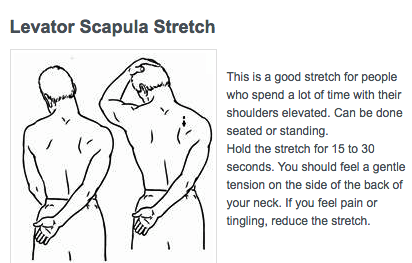

Please be aware that it may take a few days for you to get used to the exercises. You would then only move on to the next exercise once the current exercise evoked a 0 on the scale, for three days in a row. it provokes mild to moderate symptoms that disappear quickly after stopping the exercise).

It would be advisable to start each exercise at a level that you would rate as a 2 or 3 on the rating scale (i.e. For example, 0 through to 5 for the severity of your symptoms (0 being no symptoms and 5 being severe symptoms). In order to pace your exercises, so you do not move on to exercises that are too difficult before you are ready, you may also like to try using a ‘number rating scale’. You might find that your dizziness problems get worse for a few days after you start the exercises, but you should persevere with them. As a general rule, you should build up gradually from one set of exercises to the next, spending one to two minutes on each exercise.

You will be given guidance on how many repetitions of each exercise to do and when to progress to the next set of exercises. It can be helpful if someone else learns the exercises and helps you with them. You could ask if it is possible for a friend or relative to be with you at the assessment. You should be assessed for an individual exercise programme to ensure you are doing the appropriate exercises. The aims of the Cawthorne-Cooksey exercises include relaxing the neck and shoulder muscles, training the eyes to move independently of the head, practising good balance in everyday situations, practising the head movements that cause dizziness (to help the development of vestibular compensation), improving general co-ordination and encouraging natural unprompted movement. Vestibular compensation is a process that allows the brain to regain balance control and minimise dizziness symptoms when there is damage to, or an imbalance between, the right and left vestibular organs (balance organs) in the inner ear.Įssentially, the brain copes with the disorientating signals coming from the inner ears by learning to rely more on alternative signals coming from the eyes, ankles, legs and neck to maintain balance.
Turning the head to look over the shoulder is what movement Offline#
You can download this fact sheet to view offline or print by clicking the link below. Our Helpline team are also here to answer your questions and provide practical and emotional support. You might be interested in reading our Dizziness and balance problems booklet for further information on the different causes of dizziness and the conditions that can be treated with vestibular rehabilitation exercises. Each person is affected differently by dizziness and balance problems and you should speak with your GP or specialist for individual advice. Our fact sheets are designed as general introductions to each subject and are intended to be concise. This fact sheet provides information on vestibular rehabilitation exercises for people with dizziness and balance problems.



 0 kommentar(er)
0 kommentar(er)
